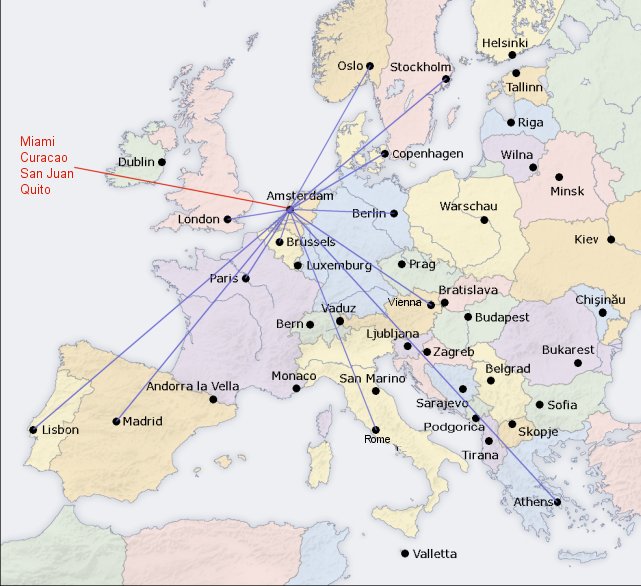

Connecting our Caribbean flights to Europe via Amsterdam Hub
Also check the Payware Hangar - Schedules at bottom of page
PH-TEA 'Amsterdam'
|
FS9 and FSX
|
|
|
Repaints by JF FSX version includes enhanced VC
|
PH-RJA 'Brussels' Iris (FSX) PH-RJB 'Basel' Posky (FS9)
|
FS9 and FSX
|
|
|
Repaints by JF FSX version includes enhanced VC
|
PH-TEB 'Oslo'
|
FS9 and FSX
|
|
|
Repaints by Meindert Wijnberg NO VCs included
|
Tradewind European Schedules |
 |
||||||||||||||||||||||||||||||
|
Aircraft Types:
|
||||||||||||||||||||||||||||||
Days of Service:
|
||||||||||||||||||||||||||||||
|
||||||||||||||||||||||||||||||
| Caribbean/US Connecting Flights | ||||||||||||||||||||||||||||||
| From MIAMI (MIA) UTC -0500 | To MIAMI (MIA) UTC -0500 | |||||||||||||||||||||||||||||
| 1234567 | 07:00 | 00:55* | TC1070 | 747 | Via JFK | 1234567 | 08:00 | 13:00 | TC1069 | 747 | Via JFK | |||||||||||||||||||
| From CURACAO (CUR) UTC -0400 | To CURACAO (CUR) UTC -0400 | |||||||||||||||||||||||||||||
| 1234567 | 19:55 | 10:55* | TC1172 | 777 | NONSTOP | 1234567 | 13:00 | 17:00 | TC1171 | 777 | NONSTOP | |||||||||||||||||||
| From SAN JUAN (SJU) UTC -0400 | To SAN JUAN (SJU) UTC -0400 | |||||||||||||||||||||||||||||
| 1234567 | 10:20 | 02;00* | TC1190 | 777 | Via LHR | 1234567 | 07:00 | 14:40 | TC1191 | 777 | Via LIS | |||||||||||||||||||
| From QUITO (SEQU) UTC -0500 | To QUITO (SEQU) UTC -0500 | |||||||||||||||||||||||||||||
| 1234567 | 15:10 | 11:45* | TC1300 | 777 | Via NAS | 1234567 | 14:00 | 01:10* | TC1301 | 777 | Via HAV | |||||||||||||||||||
|
QUICK LINKS |